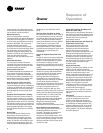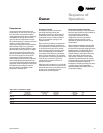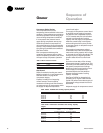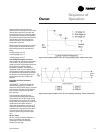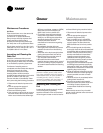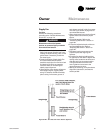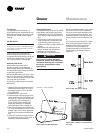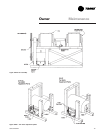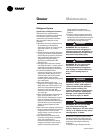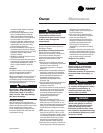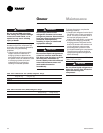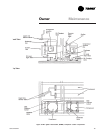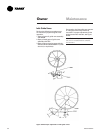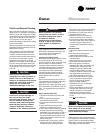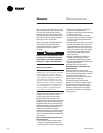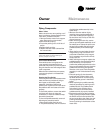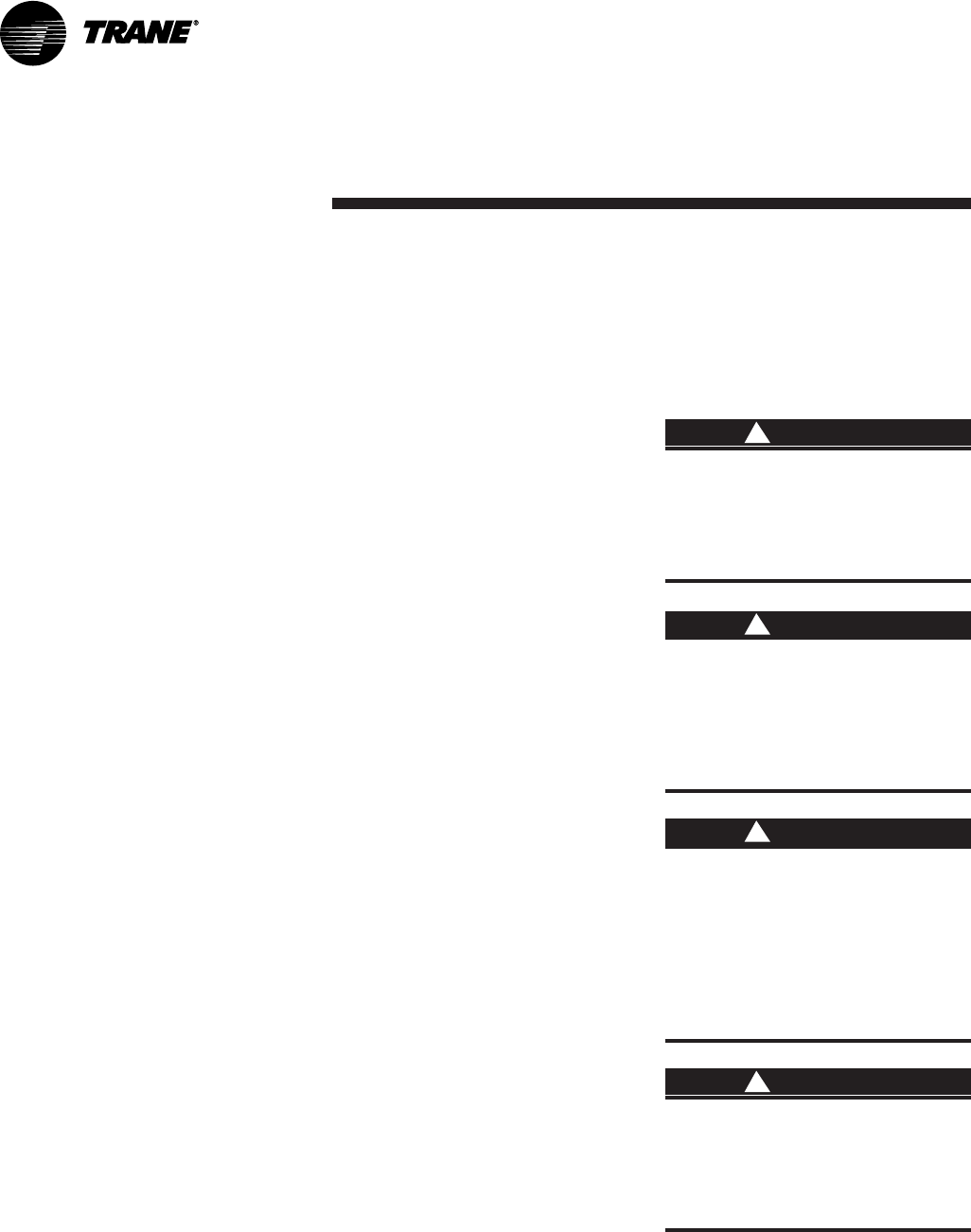
102 SCXG-SVX01B-EN
Follow specific manufacturer’s
guidelines for conversion of existing
systems.
• To assist in reducing power generation
emissions, always attempt to improve
equipment performance with improved
maintenance and operations that will
help conserve energy resources.
WARNING: Do not work in a
closed area where refrigerant or
nitrogen gases may be leaking. A
sufficient quantity of vapors may
be present and cause injury.
WARNING: Do not use oxygen,
acetylene, or air in place of
refrigerant and dry nitrogen for
leak testing. A violent explosion
may result causing injury or
death.
WARNING: Always use a pressure
regulator, valves, and gauges to
control drum and line pressures
when pressure testing the
system. Excessive pressures may
cause line ruptures, equipment
damage, or an explosion which
may result in injury or death.
WARNING: Do not exceed 200
psig when leak testing the
system. Damage to the unit could
result, or an explosion may occur
causing injury or death
In the event of required system repair,
leak test the liquid line, evaporator coil,
and suction line at pressures dictated by
local codes, and using the following
guidelines.
1. Charge enough refrigerant and dry
Owner
ƽƽ
ƽƽ
ƽ
WARNING
!
ƽƽ
ƽƽ
ƽ
WARNING
!
ƽƽ
ƽƽ
ƽ
WARNING
!
ƽƽ
ƽƽ
ƽ
WARNING
!
Maintenance
Refrigerant System
Special Note on Refrigerant Emissions
Follow the Trane recommended
procedures on operation, maintenance,
and service to ensure refrigerant
conservation and emission reduction.
Also, pay specific attention to the
following:
• Whenever removing refrigerant from
air conditioning or refrigerating
equipment, recover for reuse, recycle,
reprocess (reclaim), or properly
destroy it.
• Always determine possible refrigerant
recycling or reclaiming requirements
before beginning recovery. Questions
about recovered refrigerants and
acceptable refrigerant quality
standards are addressed in ARI
Standard 700.
• Use approved containment vessels
and safety standards. Comply with all
applicable transportation standards
when shipping refrigerant containers.
• To minimize emissions while
recovering refrigerant, use recycling
equipment. Always attempt to use
methods which will pull the lowest
possible system vacuum while
recovering and condensing refrigerant
into containment.
• When leak checking with trace
refrigerant and nitrogen, use HCFC22
(R22) rather than CFC12 (R12) or any
other fully halogenated refrigerants.
Be aware of any new leak test
methods which eliminate refrigerant
as a trace gas.
• When cleaning system components or
parts, do not use CFC11 (R11) or
CFC113 (R113). Refrigeration system
clean up methods using filters and
dryers are recommended. Do not use
solvents which have ozone depletion
factors. Properly dispose of used
materials.
• Take extra care to properly maintain all
service equipment directly supporting
refrigerant service work such as
gauges, hoses, vacuum pumps, and
recycling equipment.
• Stay aware of unit enhancements,
conversion refrigerants, compatible
parts, and manufacturer’s
recommendations that will reduce
refrigerant emissions and increase
equipment operating efficiencies.



